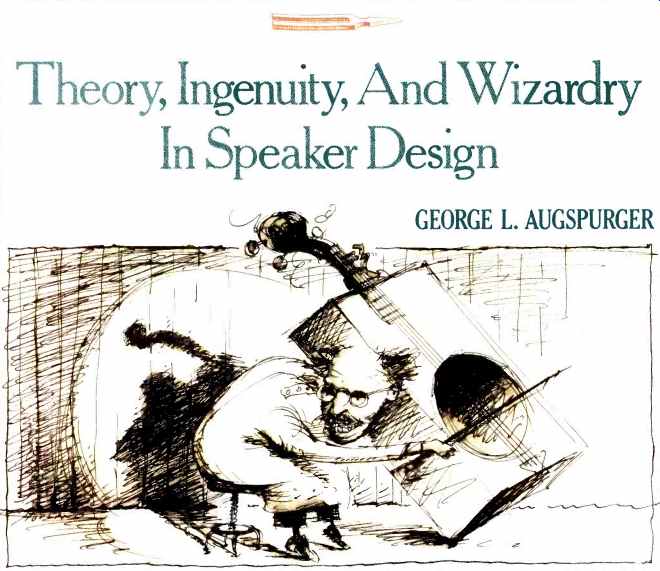
Author: GEORGE L. AUGSPURGER
[This article was originally published as "Theory, Ingenuity, and Wishful Wizardry in Loudspeaker Design-A Half-Century of Progress?" in the Journal of the Acoustical Society of America, Vol. 77, No. 4 (April 1985), pgs. 1303-1308. Reprinted with permission. 1985, American Institute of Physics.]
(George L. Augspurger has reviewed new patents relating to loudspeaker design for the Journal of the Acoustical Society of America and for the Journal of the Audio Engineering Society for the last six years. His knowledge of the literature and tongue-in-cheek writing style have made what might be a boring column into a well-read feature section.-E.P.)
Contributions to the art of loud speaker design are well documented in technical literature, but for the most part only if intended for professional or commercial application. Fifty-odd years of home high-fidelity loudspeaker development are known mainly by product reviews in consumer publications and a few land mark products that serve as continuing standards. Countless others have disappeared. The following presents a brief personal view of what took place in high-fidelity loudspeaker design from the 1940s to the present. Statements of fact have been verified from printed sources wherever possible. Im plied value judgments are the author's own and may be freely contested by the reader.
The term "high fidelity" came into vogue in the late 1940s. It was used to describe a new generation of products aimed at a new segment of the consumer market. Within the high-fidelity clan, potential buyers of this exotic equipment came to be called audiophiles. To the general public they were described, more aptly, as hi-fi nuts. At that time, high-fidelity components were as expensive and addictive as are personal computers today.
Loudspeakers and loudspeaker systems have always enjoyed a certain romantic appeal not found (until recently, anyway) in more mundane hardware such as cable and connectors. Over the past 50 years, the variety of devices sold as high-fidelity loud speakers is truly amazing. If one includes designs patented but not marketed, the category becomes chaotic.
As in all creative endeavor, loudspeaker designs tell us a lot about their de signers. These people, some well known but mostly obscure inventors, can be classified on the basis of their designs into three broad categories. I have chosen *o label the archetypes of the three categories as the elegant theoretician, the inspired tinkerer, and the wishful wizard.
In surveying the development of high-fidelity loudspeaker design, one occasionally comes across a novel and beautiful expression of fundamental physical principles. A good example is the very first loudspeaker to de serve a place on the list. I refer to the classic Rice-Kellogg electrodynamic loudspeaker which appeared in 1925.
The realization that a mass-controlled piston exactly compensates for de creasing radiation loading at lower and lower frequencies was a masterful in sight that remains a cornerstone of extended-range loudspeaker design. It reveals its inventors as worthy examples of the elegant theoretician.
At the opposite end of the spectrum is the loudspeaker design that could work only if the laws of physics were rearranged to suit the whim of the de signer. One example enjoyed considerable popularity in the 1950s and went by the trade name "The Perfect Baffle." It was a small cube, no larger than necessary to mount a loudspeaker of the desired diameter. Inside was an unadorned wood cavity without padding or bracing. The secret to perfection was found on the back panel.
Here a small trapdoor hinged at the top was free to swing to and fro in response to the relative forces of gravity and air pressure. Thus relieved of back pressure, the loudspeaker cone was allowed to follow the subtle nuances of the electrical signal.
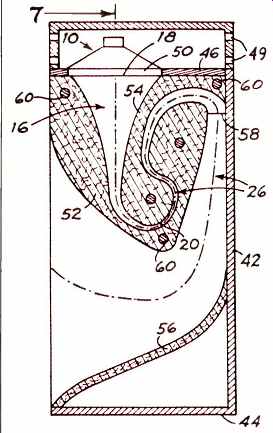
Fig. 1-A patented folded horn featuring a gradually decreasing, then increasing,
cross-sectional area.
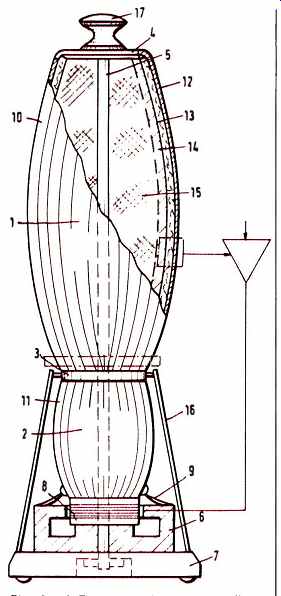
Fig. 2-A European "barrel stave" loudspeaker that includes motional
feedback taken from a sensor in the back chamber.
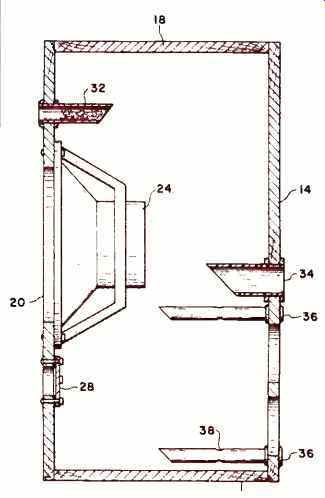
Fig. 3-One of the scores of patented variants of the vented box. This one
appears to include vents, valves, and whistles.
The notion that back pressure is an evil force that can somehow be bled off through valves, vents, or permeable membranes is one that crops up again and again in loudspeaker patents.
However, The Perfect Baffle is the first example that I have found and certainly the most inspired in its simplicity. Its unknown inventor serves as the godfather of all wishful wizards.
I hesitate to single out any particular designer as the epitome of an inspired tinkerer. Anyone thus labeled may think that his accomplishments are being slighted. To the contrary, this category contains the great majority of successful loudspeaker designs. Consider for a moment that most cone-type loudspeakers operate as rigid pistons through only a portion of their useful frequency range. A really good cone negotiates the transition from piston operation through various breakup modes in a way that maintains relatively flat frequency response, minimizes audible forms of distortion, and achieves reliable uniformity from one unit to the next. The process defies analysis, yet the inspired tinkerers of loudspeaker design have produced numerous examples proving that it can be done. A case in point is JBL's Mod el LE8T designed by the late Edmond A. May.
It seems to me that most of the successful loudspeaker designs of the past 50 years owe at least as much to inspired tinkering as to their theoretical foundations. Of these products, a few have had lasting influence substantially greater than that of their contemporaries. They serve as milestones that have marked new directions in home loudspeaker design. Five of these trend-setting designs are described here because they give a useful insight into the twists and turns of consumer acceptance.
(A) The first milestone has already been mentioned. The Rice-Kellogg moving-coil loudspeaker was the fore runner of today's direct-radiator de signs. It was introduced in 1925 as a home loudspeaker system and enjoyed almost immediate commercial success. The goal of every man's home, a concert hall, seemed to be just around the corner.
However, in the years following, an interesting dichotomy developed.
Commercial loudspeakers, primarily those used to reproduce motion-picture sound, became bigger and better, while loudspeakers provided in consumer radios and phonographs got smaller and cheaper. In the decade from 1930 to 1940, there was no such thing as a home high-fidelity loud speaker. Those who wanted some thing better than the narrow frequency range and muffled tonal quality of a console radio had to seek out commercial sound products and adapt them to a home "custom installation." (B) The second milestone was such a product: The Altec Lansing Model 604 duplex radiator was introduced in the early 1940s and described by James B. Lansing in a paper published in 1943 [1]. The 604 combined a highly efficient 15-inch woofer with a high-frequency compression driver and horn. The high-frequency driver was planted onto the back of the woofer magnet, and the horn throat travelled through the woofer's center pole piece.
When it was introduced, the 604 was intended primarily as a broadcast and recording-studio monitor speaker, in which capacity it became an established standard. However, Altec Lansing also provided recommendations for installation in home music systems.
(You may remember seeing a 604 and associated electronics mounted to the back of a closet door.) The 604 was the loudspeaker system installed in early Fisher consoles and was one of the most important reasons that the Fisher sounded audibly superior to al most any other all-in-one package available at the time.
When high fidelity became a consumer fad, other coaxial loudspeakers appeared. By 1956 one could choose from the Jensen, Stephens, General Electric, or RCA variants in the U.S. and the Tannoy in England. Like the Altec geometry, Tannoy and Jensen used a through-the-woofer high-frequency horn. Jensen even added a separate horn-loaded super tweeter to make a "Triaxial" system. On the other hand, the RCA LC-1A was an all-direct radiator design, a pet project of Harry F. Olson.
The 604 evolved through a number of alphabetical changes and one brief numerical increment, the 605A. Forty years after its introduction, it is still going strong as the Model 604-8G. Of the other coaxial designs mentioned, all are also-rans except the Tannoy Dual Concentric, which enjoys a good reputation both as a consumer product and a recording-studio monitor speaker.
(C) The Klipsch corner horn was de scribed [in January 1946] by its inventor as "a high-quality loudspeaker of small dimensions" [2]. It too was an overnight success that remains a con temporary standard. The design is a beautiful example of good theory combined with sudden insight. A high-quality horn designed to stand in a corner had already been produced by P.G.A.H. Voigt. But Paul Klipsch realized that the room boundaries them selves would serve as a horn mouth; all that needed to be done was to design a suitable folded throat section.
In contrast to the large theater horns of the time, the Klipschorn was about a tenth the size and had powerful low-frequency response that extended about an octave lower. Audiophiles were thrilled to discover that there was music below 55 Hz (and sound effects, and the "1812 Overture").
The Klipschorn inspired countless other folded horn designs that still keep evolving. Figure 1 illustrates one of the scores of patented variations. It would seem that there must be a finite number of ways that an expanding air column can be squeezed and folded, but armchair horn designers have not yet reached that limit. Only the advent of stereo reproduction and the need for smaller, more versatile loudspeaker systems finally diminished the corner horn's status as the ultimate home loudspeaker system.
(D) The fourth milestone is the vented box enclosure, popularized by Jensen in the early 1940s as the "bass reflex" loudspeaker system. Now here was something that even the nontechnical enthusiast thought he under stood. Patented variants of the vented loudspeaker enclosure have pushed the limits of man's imagination to new frontiers, as we will see later in this article.
Because of its simple geometry, the vented box became a favorite of home constructors, but results were often disappointing. Consumer magazines were full of advice on various methods for properly tuning vented enclosures.
These varied from the simple "click-boom" test to complicated analysis of measured impedance. They all had one element in common: Their proponents (including myself) really didn't know any more on the subject of loud speaker-box-vent interaction than the people being instructed.
Primarily through the use of electrical analog circuits, the behavior of vented systems became better under stood. Locanthi's 1952 paper on electrical analogies [3] was used by at least two manufacturers to design better vented systems. In 1961, specific loudspeaker driver parameters and appropriate enclosure "alignments" were described by Neville Thiele [4] and later refined by Richard H. Small.
Today, Thiele-Small parameters are routinely published by loudspeaker-driver manufacturers and used by consumers to design systems with predict able low-frequency characteristics.
The loudspeaker experimenter who dismissed vented enclosures as boom boxes a few years ago is now proud to demonstrate his "computer-aided augmentation of the classic number five B-4 alignment."
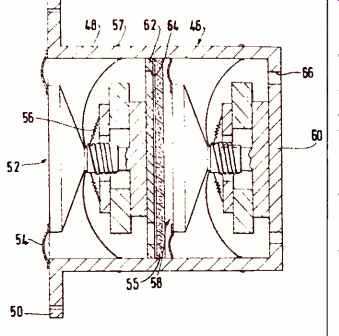
Fig. 4-A compound speaker system in which the second driver maintains constant
rear volume for the first.
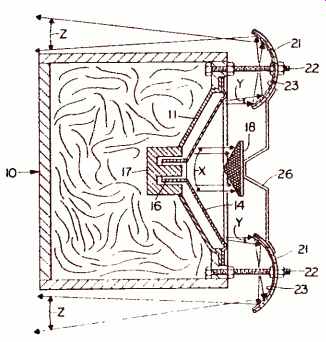
Fig. 5-A patented system for separating out distortion products and directing
only pure sound to the listener.
Two of the many vented designs that have come and gone are interesting enough to deserve mention. The R-J enclosure introduced in 1951 [5] deliberately increased mutual coupling be tween the loudspeaker cone and the enclosure vent. The result was a sort of brute-force acoustic low-pass filter. Al though the technique is a practical one to use in certain situations, the R-J enclosure was only moderately popular for a short time and then disappeared from the market.
At about the same time, an interesting and popular vented box design was developed by John E. Karlson. Its theory owed more than a little to wishful wizardry, being based on the notion that an exponential slot somehow resonates over a broad band of frequencies [6]. The enclosure really seems to have functioned as a three-chamber vented box with increased mutual coupling between speaker and vent.
Although high-fidelity showrooms of the 1950s were filled with various kinds of audibly resonant horns, pipes, prisms, and labyrinths, the nonresonant school of loudspeaker design had its adherents as well. Wharfedale promoted enclosures using sand-filled walls to damp out panel resonances.
The Hartley Boffle, along with a few transmission-line designs, attempted to dissipate the backwave through purely resistive loading. The Klein lonophone [7] did away with any moving mechanical system by exciting air molecules directly, as did the corona wind loudspeaker [8].
Some designers tried to eliminate resonance by eliminating the loud speaker enclosure. The Quad electro static speaker consisted of a large, un-baffled diaphragm operating as a di pole radiator. It established its own cult following (using that term in a favorable sense) and was quickly joined by a number of other electrostatic speakers. In its current version, the Quad remains a standard to which other high-quality speakers are compared. I have not included it in this list of mile stones only because the influence of electrostatic designs has not extended beyond a relatively small group of high-end product buyers.
The coming of stereo disc recording prompted a mad scramble among loudspeaker manufacturers. Designs as widely different as the Quad and the Klipschorn were nevertheless both finicky in terms of room placement and large enough to give pause to the stereo equipment buyer.
One answer was to retain the snob appeal of sheer bulk, but to put two loudspeaker systems into a single en closure. The most successful example of this philosophy is probably the JBL-Ranger Paragon. The visual impressiveness of the Paragon as styled by Arnold Wolf has probably not been equaled by any other loudspeaker system.
Harry F. Olson developed and patented an interesting variation of the all-in-one concept [9]. To gain maximum speaker separation in a cabinet of minimum width, Olson put the speakers at the ends of the cabinet and then added acoustic prisms in the form of waveguides. Sound seemed to originate from virtual images hovering in space beyond the ends of the system.
To the best of my knowledge, the concept was never developed into a commercial product.
Even under the best of conditions, big, impressive loudspeaker systems appeal primarily to people with big, impressive rooms to put them in. During the 1960s and 1970s, it became apparent that the appeal of high fidelity was not limited to the wealthy or to classical music buffs. Everyone wanted to own a good stereo system. And for most people, this meant a good small stereo system.
(E) As it happened, there was al ready a battle underway between advocates of big, efficient, powerful speaker systems and those who took up the banner of the "revolutionary" loudspeaker designed by Edgar Villchur in 1954 [10]. Villchur's "acoustic suspension" design was a true mile stone. Within a half-dozen years, its introduction had turned the loudspeaker industry upside down. As far as the buyer was concerned, bigger was no longer better.
In Villchur's design, most of the re storing force acting upon a loudspeaker in a closed box is supplied by the stiffness of the air in the box rather than the mechanical centering system. The effective change in air volume resulting from the motion of the cone is relatively small, and over this range the air acts as a nearly linear spring. In a number of papers and articles, the inventor documented a substantial reduction in low-frequency distortion as compared with other loudspeaker-system de signs of the time.
What really caught the public fancy, however, was the fact that the original Acoustic Research AR1 was a small loudspeaker system having essentially flat low-frequency response down into the 40-Hz region. Other manufacturers were quick to point out that the AR1 gobbled up about 10 times the electrical power needed by larger, more efficient systems. With 40- and 50-watt amplifiers becoming available, this turned out not to be a major drawback, and the trend toward smaller, less-efficient home loudspeaker systems was firmly established.
Today we can choose from a variety of mini-loudspeakers that are only about one-tenth as efficient as the original Acoustic Research model. Small acoustic suspension systems coexist peacefully with small vented systems.
But the Klipschorn retains its title as the smallest practical low-frequency horn. As Paul Klipsch is fond of saying, no one has yet figured out how to miniaturize a 32-foot wavelength.
At this point, I would like to describe a few of the more fanciful loudspeaker designs that have been patented but somehow failed to impress the fickle public.
Omnidirectional radiation is a performance goal sought by many designers. A popular design approach in Europe seems to be what I call the barrel stave loudspeaker. Figure 2 illustrates a recent example. The method of operation can be understood by visualizing what happens if you squeeze a football between its tips. For all I know, such a mechanism can be made into an acceptable loudspeaker, but no commercial version has been marketed in the United States.
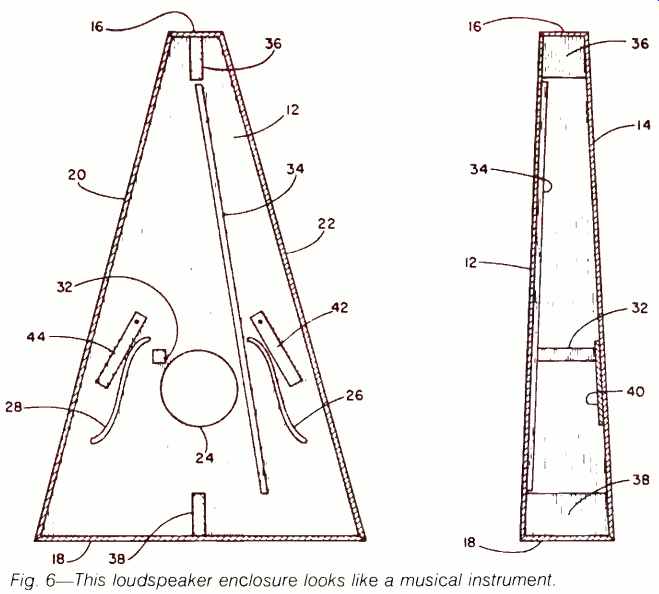
Fig. 6-This loudspeaker enclosure looks like a musical instrument.
The compulsion to turn a simple vented enclosure into something much more complicated has already been mentioned. A review of loudspeaker patents reveals multiple chambers, flexible walls, F-slots, slits, "laminar flow vents," "Venturi-effect" ducts, and adjustable valves, among other vari ants (see Fig. 3). Such patents usually start out with an overview of the state of the art, but often what is actually revealed is a profound ignorance of how vented boxes really work.
The phase-inverting property of a vented speaker enclosure seems especially hard to grasp. One inventor, upset by both the "varying back pres sure" and the necessity for resonance in a conventional vented system, relieved the backwave by mounting a second, downward-firing loudspeaker in the bottom of the cabinet and connecting it in opposing polarity. Sound waves from the second speaker were then redirected forward off the face of a 45° reflector to invert their phase.
One just cannot argue with logic like that.
Another design that uses a second loudspeaker to relieve back pressure is shown in Fig. 4. The right loudspeaker, with its own rear chamber, acts to provide a constant back volume for the main speaker ... a sort of electro-acoustic bootstrap circuit. The interesting thing about this idea is that, with proper design, it can be made to work.
A complete analysis is found in Chapter 6 of the 1957 edition of Olson's Acoustical Engineering [11], published about 10 years before the patent in question was issued.
Yet another obsession of many amateur loudspeaker designers is the Jekyll-Hyde theory of speaker operation.
If one could just identify the parts of a speaker cone that generate distortion and somehow render them impotent, one would be left with a perfect sound transducer. A most intriguing design is illustrated in Fig. 5. This section view shows conventional loudspeaker 17 mounted on the back panel of sealed box 10. Distortion products X are generated near the apex of the cone and soaked up by absorber 18. Undistorted waves Y from the perimeter of the cone are redirected into the listening area by what appear to be thrust reversers 23. Resulting sound Z is there fore a true replica of the original electrical signal. Of course, one of the most popular approaches taken by wishful wizards is the musical instrument analogy. Loudspeaker enclosures are de signed to simulate the shape and sound of harps, chimes, kettledrums, organs, and bass viols, as in Fig. 6.
A number of years ago, my friend Antony Doschek became upset by the number of loudspeaker-enclosure designers who purported to have discovered the secrets of Stradivari and applied them to the art of loudspeaker cabinetry. Being wise in the ways of violin design, Doschek wondered what would happen if someone who really knew something about the subject built a speaker enclosure of multi-resonant plates, and proceeded to do so. The resulting system sounded so good that many listeners refused to believe they were hearing a highly resonant device.
To demonstrate that his loudspeaker enclosure in fact behaved as a respectable musical instrument, Doschek attached the neck, bridge and strings from a bass viol and actually played the hybrid creation at a local meeting of the Catgut Acoustical Society.
This overview of consumer loud speaker history has necessarily omitted more interesting designs than it has described. I hope that it has given an insight into the rapid changes and proliferation of new ideas that characterized consumer loudspeaker development in the 1950s. We shall not again see such a profusion of approaches to supposedly accurate sound reproduction. But the perfect loudspeaker remains a challenge, and the theorists, tinkerers, and wishful wizards continue to pursue that dream.
References
1. Lansing, J. B., "The Duplex Loudspeaker," Communications, Vol. 23, No. 12 (1943), pg. 22.
2. Klipsch, P. W., "A High Quality Loudspeaker of Small Dimensions," Journal of the Acoustical Society of America (JASA), Vol. 17 (1946), pgs. 254-258.
3. Locanthi, B. N., "Application of Electric Circuit Analogies to Loud speaker Design Problems," IRE Trans. Audio, Vol. PGA-6 (1952); reprinted in the Journal of the Audio Engineering Society (JAES), Vol. 19 (1971), pgs. 775-785.
4. Thiele, A. N., "Loudspeakers in Vented Boxes," Proc. IRE Aust., Vol. 22 (1961), pgs. 487-508; reprinted in JAES, Vol. 19 (1971), pgs. 352-392, 471-483.
5. Joseph, W. and F. Robbins, "The R-J Speaker Enclosure," Audio Engineering, December 1951, pg. 17.
6. Karlson, J. E., "The Karlson Speaker Enclosure," Radio Television News, January 1954, pgs. 55-60.
7. Klein, S., United States Patent No. 4,306,120 (1981).
8. Shirley, G., "The Corona Wind Loudspeaker," JAES, Vol. 5 (1957), pgs. 23-31.
9. Olson, H. F., United States Patent No. 3,105,113 (1963).
10. Villchur, E. M., "Revolutionary Loudspeaker and Enclosure," Audio, October 1954, pgs. 25-27.
11. Olson, H. F., Acoustical Engineering, Van Nostrand. New York, 1957, pgs. 157-159.
(Source: Audio magazine, Apr. 1987)
= = = =